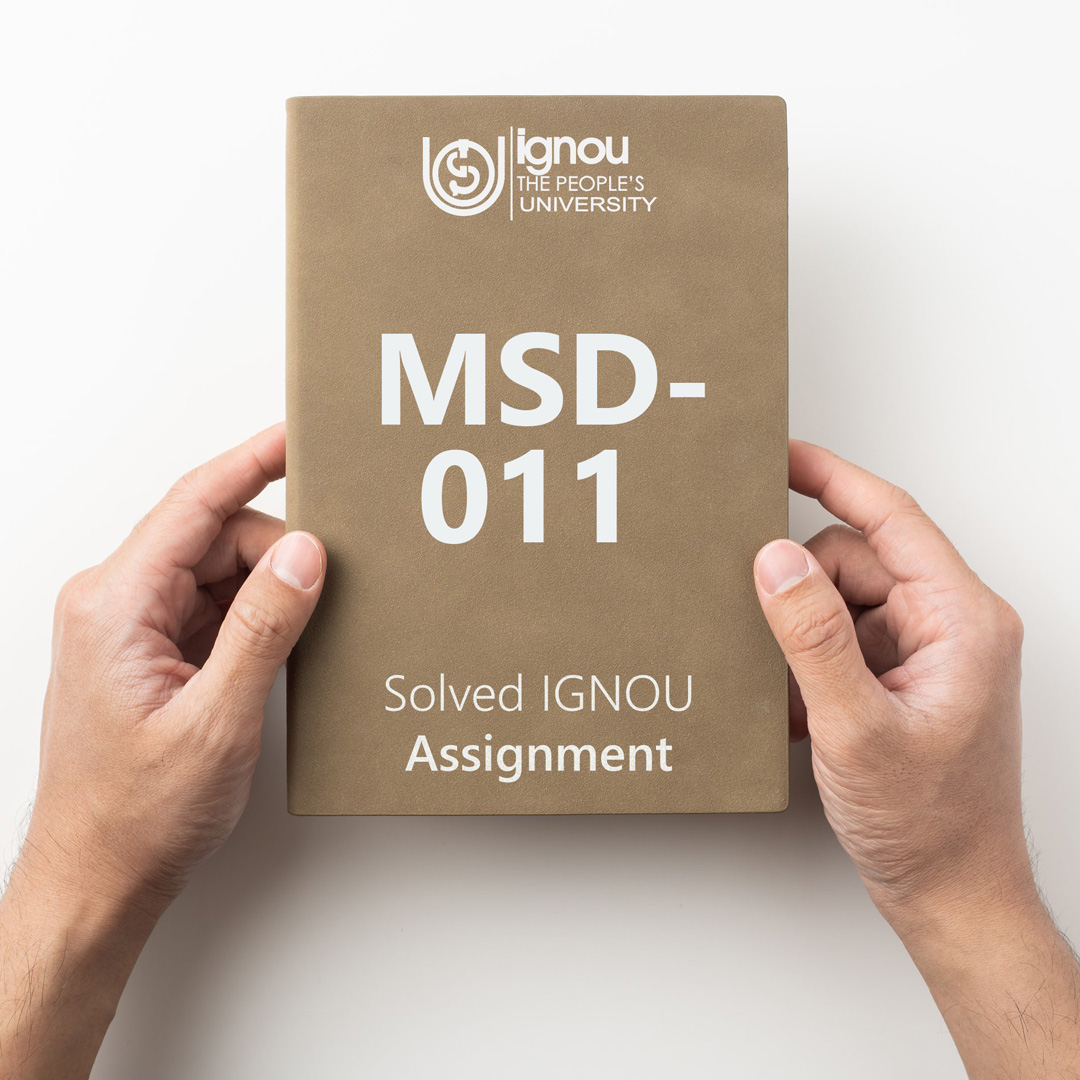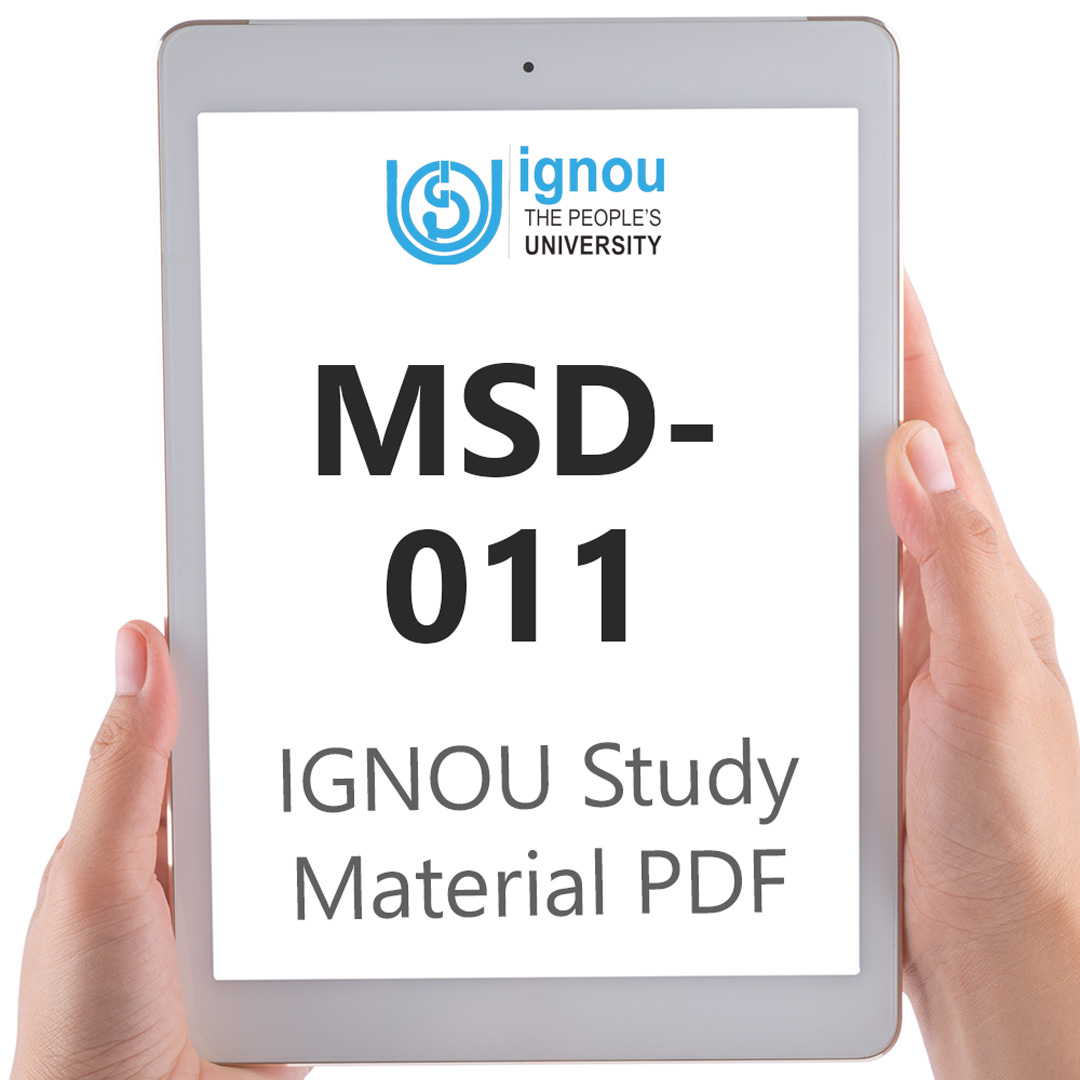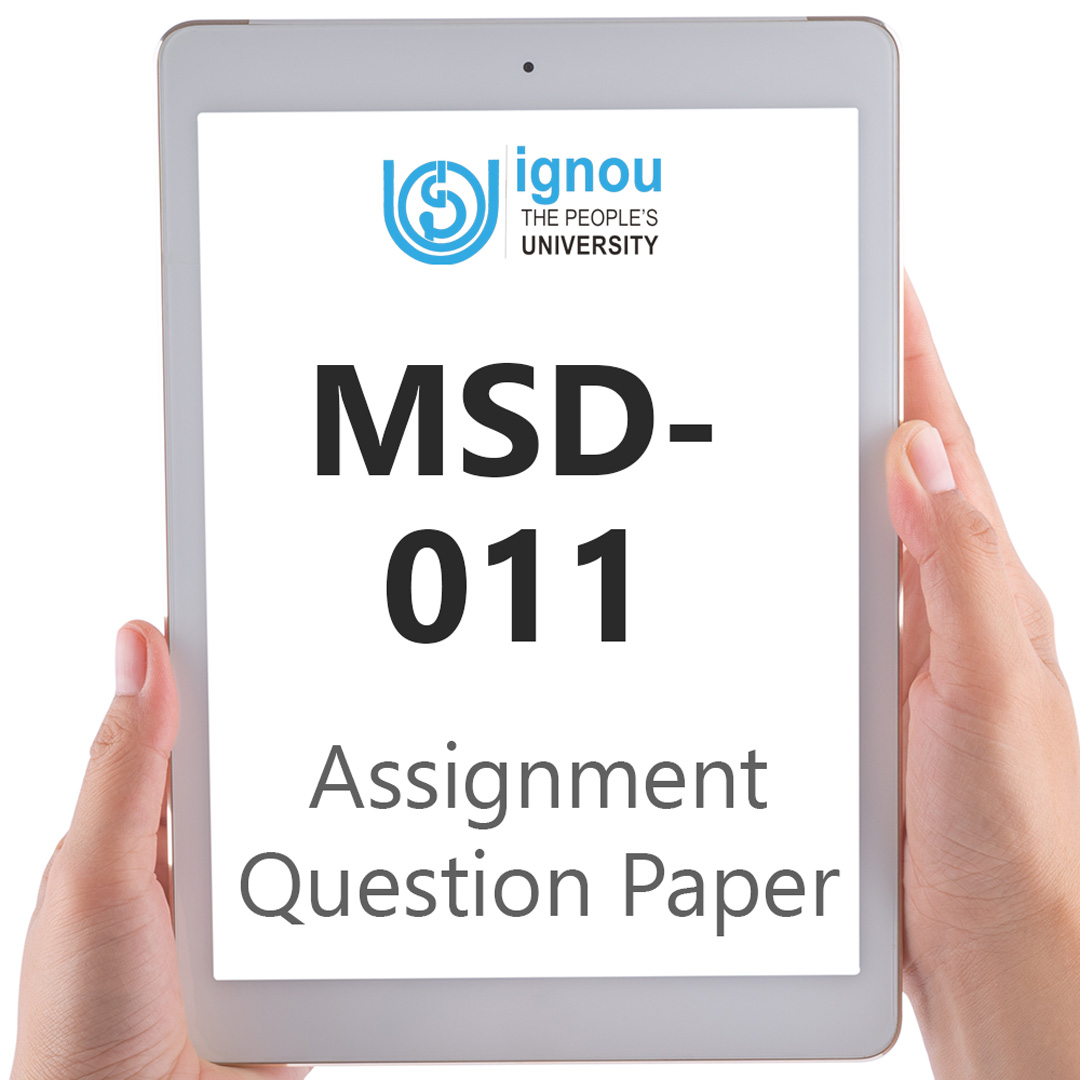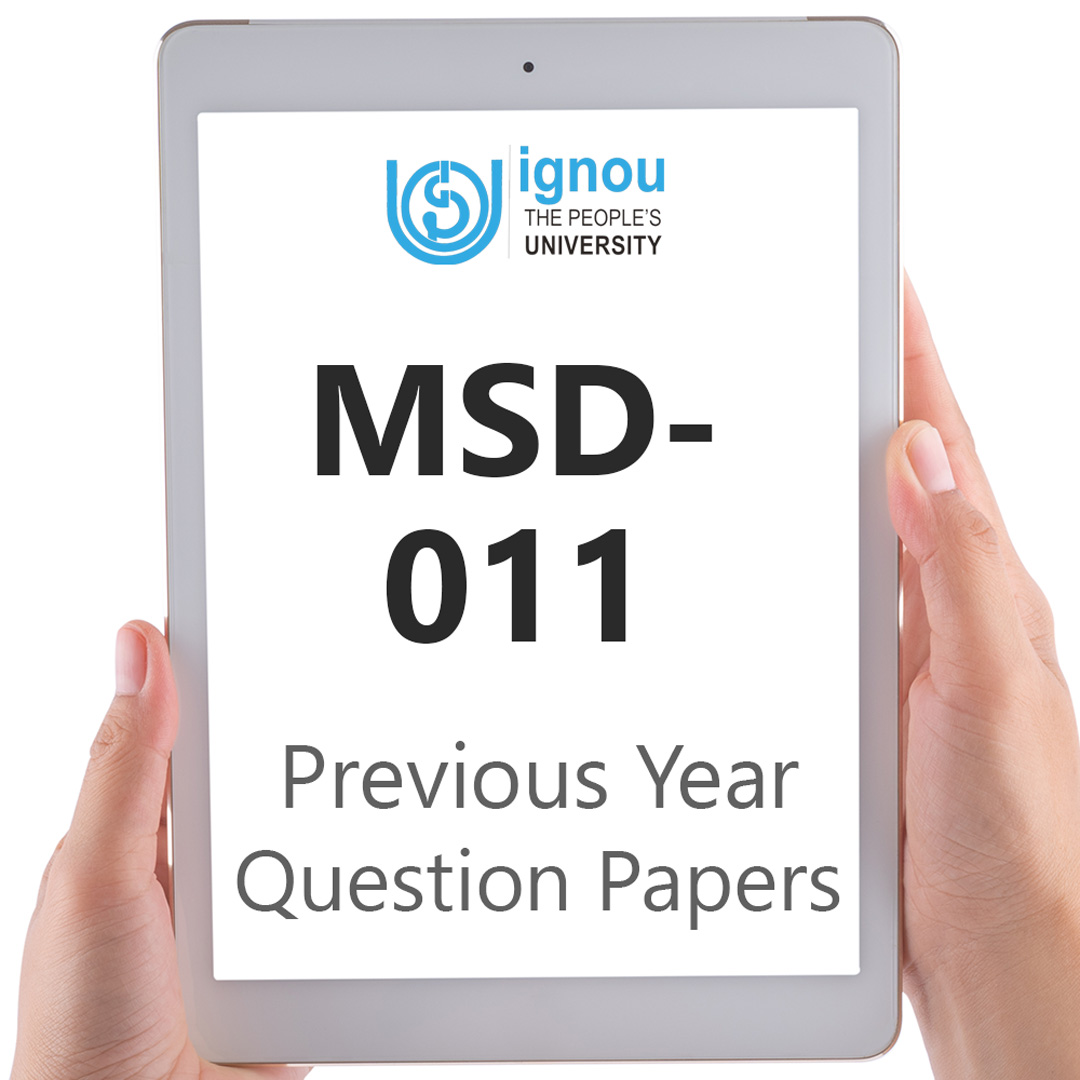If you are looking for MSD-011 IGNOU Solved Assignment solution for the subject Sustainability Science, you have come to the right place. MSD-011 solution on this page applies to 2023 session students studying in PGDSS, MASS courses of IGNOU.
MSD-011 Solved Assignment Solution by Gyaniversity
Assignment Code: MSD-011/TMA/2023
Course Code: MSD-011
Assignment Name: Sustainability Science
Year: 2023
Verification Status: Verified by Professor
Answer all the questions. All questions carry 25 marks each.
Q1) Write a short essay on Brundtland Report.
Ans) The Brundtland Report is a publication from the United Nations (UN) titled "Our Common Future". It was released in 1987 and is widely considered as a landmark publication in the field of sustainable development. The report was commissioned by the UN and was led by Gro Harlem Brundtland, a former Prime Minister of Norway, and a team of experts.
The main purpose of the Brundtland Report was to address the growing concern about the state of the environment and to offer recommendations for achieving sustainable development. The report defined sustainable development as "development that meets the needs of the present without compromising the ability of future generations to meet their own needs."
The Brundtland Report identified three main components of sustainable development: economic growth, social equity, and environmental protection. The report argued that these three components are interdependent and that achieving sustainable development requires a balance between them. It emphasized the importance of finding ways to reconcile economic development with environmental protection, as the two are often seen as conflicting goals.
One of the key messages of the Brundtland Report was that sustainable development is not just an environmental issue, but also an economic and social issue. The report argued that economic growth and social equity are necessary for sustainable development, but that they must be pursued in a way that protects the environment.
The report also recognized that sustainable development requires international cooperation, as many environmental problems are global in nature and cannot be solved by any one country alone. It called for a new international approach to sustainable development, based on cooperation and coordination among countries.
The Brundtland Report had a significant impact on the way the world thinks about sustainable development. It was the first time that sustainable development was defined and recognized as a global challenge. The report helped to raise awareness of the importance of sustainable development and helped to establish it as a central issue in international development discussions.
In 1992, the United Nations Conference on Environment and Development (UNCED) was held in Rio de Janeiro, Brazil, where the Brundtland Report was used as the basis for discussions on sustainable development. The conference resulted in the adoption of several important agreements, including the Rio Declaration on Environment and Development and the Framework Convention on Climate Change.
The Brundtland Report has also had a lasting impact on environmental policy and practice. Many countries have adopted sustainable development as a central goal in their national policies and have taken steps to integrate sustainable development into their decision-making processes.
In the end, the Brundtland Report is a seminal publication in the field of sustainable development. It defined sustainable development as "development that meets the needs of the present without compromising the ability of future generations to meet their own needs." The report recognized that sustainable development requires a balance between economic growth, social equity, and environmental protection and emphasized the importance of international cooperation in achieving sustainable development. The Brundtland Report has had a lasting impact on the way the world thinks about sustainable development and has helped to establish it as a central issue in international development discussions.
Q2) Define Human Development Index. Explain its role in achieving sustainable development.
Ans) The UN Human Development Report Office has been putting out the Human Development Index (HDI) every year since 1990. It is a composite index that is meant to measure "human well-being" in different countries. The index uses measures of life expectancy, school enrolment, literacy, and income to give a more complete picture of well-being and development than just income alone. Since it was first published, this index has been used by many people to compare the quality of life in different countries. Some national governments have announced their HDI ranking and what they plan to do to improve it. This shows that the HDI ranking influences policy.
In simple words, the Human Development Index is a yearly report from the UN that measures how well people are doing in different countries. It considers things like how long people live, how much they learn, and how much money they make. The HDI is used to rank how good life is in different countries. Some countries are proud of their HDI ranking and want to make it better.
Role in Achieving a Sustainable Development
The Human Development Index is a composite statistical index that measures the average achievements of a country in three basic dimensions of human development: a long and healthy life, access to knowledge and a decent standard of living. The HDI was introduced by the UNDP in 1990 as a tool for measuring human development and progress in countries.
The HDI is an important tool in achieving sustainable development because it provides a comprehensive picture of a country's overall development and helps in identifying areas that need improvement. It enables countries to compare their development status with others and to monitor their progress over time.
By focusing on human development, the HDI helps to ensure that sustainable development is inclusive and equitable. It recognizes that economic growth alone is not sufficient to achieve sustainable development, as it needs to be accompanied by improvements in human well-being. The HDI considers not only income levels, but also life expectancy, education levels, and quality of life.
The HDI also helps to prioritize and target interventions in areas where they are most needed. For example, a country with a low HDI score may focus on improving health and education outcomes, while a country with a higher HDI score may focus on reducing inequalities and improving the quality of life for all citizens.
HDI plays an important role in achieving sustainable development by providing a comprehensive picture of the level of human development and promoting the idea that development must be people-centred and not just focused on economic growth. HDI helps policymakers and governments to identify areas for improvement in human development and allocate resources more effectively towards programs that enhance human well-being. By tracking human development over time, HDI also helps to assess the impact of development policies and programs on human development outcomes.
The HDI plays a critical role in promoting sustainable development by providing a comprehensive and nuanced view of human development and progress. By focusing on human well-being and equity, the HDI helps countries to prioritize and target interventions for sustainable development and ensures that progress is inclusive and equitable.
Q3) Conserving the river Ganga is the basic key to livelihood improvement in India. Elaborate the statement.
Ans) The river Ganga, also known as the Ganges, is one of the most significant rivers in India, both culturally and economically. It is considered sacred by millions of people and supports the livelihoods of millions of others. However, over the years, the river has become increasingly polluted and overused leading to significant environmental degradation and decline in the health of its ecosystem. Therefore, conserving the river Ganga is essential for improving the livelihoods of those who depend on it for their daily survival.
From a sustainable development point of view, conserving the river Ganga is crucial for several reasons. The river supports the livelihoods of millions of people, including farmers, fishermen, and other communities who depend on it for their daily needs. Basically, anyone who is not linked to an urbanization area on a daily basis will most likely depend on it. This is due to rivers, rain, forests, etc being their only mode of life for basic life needs.
Hence the river is also a source of drinking water, irrigation, and hydropower, which are essential for the economic development of the region. Therefore, conserving the river and improving its water quality will ensure that the livelihoods of these communities are protected and sustained in the long term.
The river is home to a rich diversity of plant and animal species, many of which are unique to the region and play an important role in the ecosystem. For example, the river is home to several species of fish, reptiles, and birds that are found nowhere else in the world. These species are an important source of food and income for local communities and are also of great scientific and cultural importance. However, the degradation of the river has led to the decline of many of these species, which is threatening the livelihoods of those who depend on them for their daily survival. Therefore, conserving the river and improving its ecological health will help to protect these species and the livelihoods of those who depend on them.
River Ganga also attracts an important source of tourism, attracting millions of visitors each year who come to see its cultural and religious sites, as well as its stunning scenery. However, the degradation of the river has led to a decline in the quality of these attractions, which is affecting the local economy and the livelihoods of those who depend on tourism for an income. Therefore, conserving the river and improving its environmental health will help to maintain the quality of these attractions and the livelihoods of those who depend on them.
In conclusion, conserving the river Ganga is essential for improving the livelihoods of millions of people in India. From a sustainable development point of view, it is crucial for protecting the livelihoods of communities who depend on the river for their daily needs, preserving the rich diversity of plant and animal species that are unique to the region, and maintaining the quality of the cultural and religious sites and attractions that attract millions of visitors each year. Therefore, it is imperative that the Indian government and local communities work together to implement effective conservation and management measures that will help to protect the river and its ecosystem for future generations.
Q4) Briefly explain how the modern Information and Communication Technology can be effectively used in Environmental Education in India.
Ans) Modern Information and Communication Technology can play a crucial role in promoting environmental education in India. By using ICT tools, students, educators and the general public can access relevant and updated information on environmental issues, participate in virtual learning activities, and collaborate with others in solving environmental problems.
Here are some ways in which ICT can be effectively used in environmental education in India from a sustainable future development point of view:
Virtual Learning: ICT can provide students with virtual access to environmental resources, such as online courses, webinars, and interactive simulations that can engage and educate them about environmental issues. Online platforms like Coursera, Udemy and Khan Academy have a variety of courses on environmental science, sustainability, and green technologies that can be accessed from anywhere.
E-learning for Teachers: ICT can also support the professional development of teachers by providing access to online training, workshops, and other resources to help them effectively teach environmental education in their classrooms. Online platforms like Open Edu, EdX and Coursera provide a range of courses for teachers on environmental education and sustainable development.
Environmental Monitoring: ICT can be used to collect and monitor environmental data, such as air and water quality, soil moisture and temperature, and wildlife populations. This information can be used to make informed decisions about environmental management, conservation, and restoration.
E-governance for Environmental Protection: ICT can be used to streamline and make more transparent the process of environmental governance in India. This can be done by developing online platforms for environmental monitoring, reporting, and feedback. For instance, the Indian Ministry of Environment, Forest and Climate Change has a website where citizens can report environmental violations and track the progress of their complaints.
Social Media for Awareness: ICT can also play a crucial role in raising awareness about environmental issues and promoting environmental education. Social media platforms such as Facebook, Twitter, and Instagram can be used to reach a large audience and engage them in environmental discussions and activism. Additionally, various mobile applications like Clean India, Clean Air, and Clean Water have been developed to educate people about environmental protection and provide them with relevant information.
E-Waste Management: India generates a large amount of e-waste, and ICT can be used to manage it effectively. By developing and implementing e-waste management systems, ICT can play a significant role in reducing the environmental impact of electronic devices. These systems can include online platforms for e-waste collection and recycling, as well as information on responsible e-waste disposal methods.
Climate Change Mitigation and Adaptation: ICT can also be used to mitigate and adapt to the impacts of climate change in India. For instance, the development of early warning systems for natural disasters, such as floods and droughts, can help reduce their impact. Additionally, ICT can be used to support renewable energy sources, such as solar and wind, and to manage energy consumption more efficiently.
In conclusion, the use of ICT in environmental education in India can provide a wealth of opportunities for promoting sustainable future development. It can help provide students, teachers, and the public with access to information, resources and tools that can help them understand and tackle environmental challenges. However, it is essential that the deployment of ICT in environmental education is guided by a comprehensive and sustainable development approach, which takes into consideration the potential impacts on the environment and the need to conserve biodiversity.






